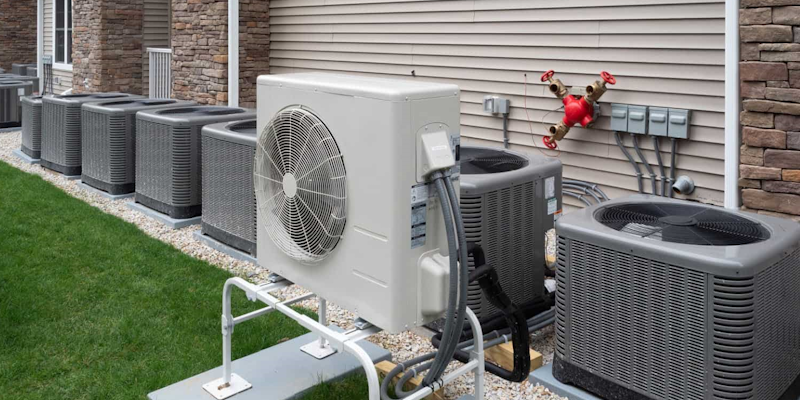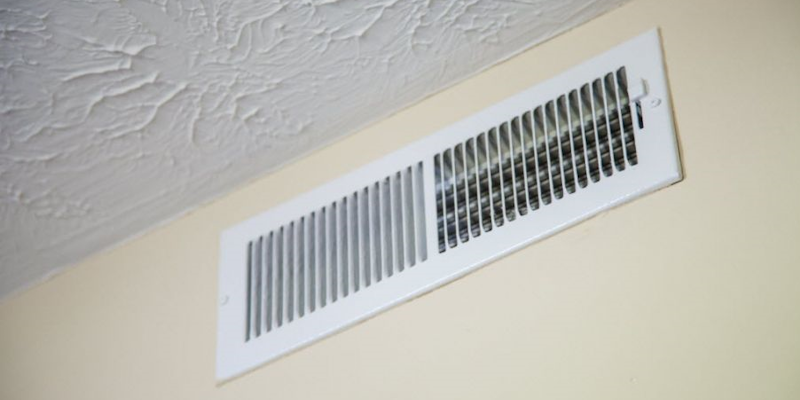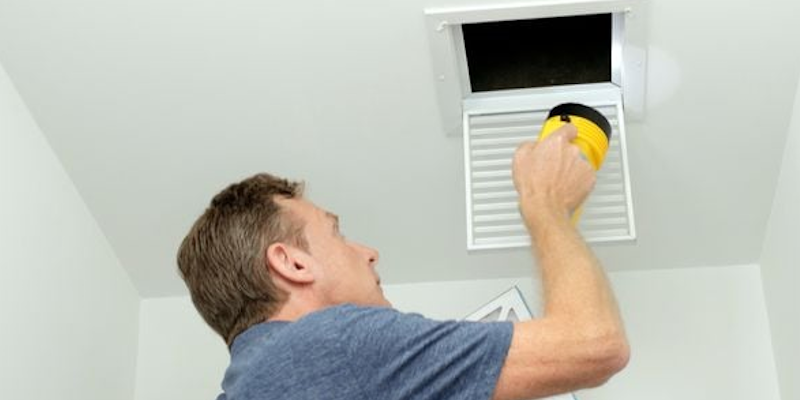
HVAC, which stands for Heating, Ventilation, and Air Conditioning, is a critical component of modern living. From keeping our homes at a comfortable temperature to ensuring the air we breathe is clean and fresh, HVAC systems play a pivotal role in our daily lives. In this comprehensive guide, we will explore the world of HVAC systems, from their fundamental components to their various types, benefits, and maintenance. We will also clarify the key differences between HVAC and air conditioning to provide a more comprehensive understanding.
What Is HVAC?
HVAC is an acronym that represents three vital functions that work together to provide a comfortable indoor environment: heating, ventilation, and air conditioning.
Heating: Heating is the process of raising the temperature of indoor spaces to ensure they are warm and comfortable during cold weather. Heating systems can utilize various energy sources, including gas, electricity, oil, or even renewable energy options.
Ventilation: Ventilation refers to the exchange of indoor and outdoor air to provide fresh and healthy air quality inside buildings. Proper ventilation is essential for removing pollutants, controlling moisture levels, and preventing the buildup of harmful gases.
Air Conditioning: Air conditioning is the process of cooling indoor spaces to maintain a comfortable temperature during hot weather. Air conditioning systems can use refrigeration cycles, heat pumps, or other cooling technologies to achieve this.
Components of HVAC Systems
To understand how HVAC systems work, it’s crucial to familiarize ourselves with their key components.
Heating Components: A heating system includes a heat source, heat exchanger, distribution system, and a thermostat. The heat source generates the heat, the heat exchanger transfers it to the air or water, the distribution system transports it to different rooms, and the thermostat allows users to control the temperature.
Ventilation Components: Ventilation involves ventilation fans, air filters, and ductwork. Fans circulate and exchange air, air filters trap pollutants, and ducts are pathways for airflow.
Air Conditioning Components: Air conditioning systems consist of a compressor, condenser coil, evaporator coil, refrigerant lines, expansion valve, and a thermostat. The compressor circulates refrigerant, the condenser releases heat, the evaporator cools indoor air, refrigerant lines transport the refrigerant, and the expansion valve regulates its flow.
Types of HVAC Systems

HVAC systems come in various types to suit different needs and preferences.
1. Central Heating and Air Conditioning Systems:
Description: Central HVAC systems use a central unit to heat or cool air, which is then distributed through ductwork to different areas. They offer consistent temperature control and air quality but require ductwork installation.
Cost: The cost of central systems can vary widely, with factors such as system size, energy efficiency, and the complexity of ductwork impacting the price. The installation can range from $2,500 to $7,500 or more, with ongoing operational costs influenced by energy efficiency.
Popular Brands: Notable brands in this category include Carrier, Trane, Lennox, and Rheem.
2. Ductless Mini-Split Systems:
Description: Ductless mini-split systems provide zoned temperature control without the need for ducts. They consist of an outdoor unit connected to one or more indoor units, offering energy-efficient and flexible installation.
Cost: The cost of ductless mini-splits varies based on the number of indoor units and their capacity. The installation cost typically ranges from $2,000 to $7,000 or more. These systems can be cost-effective for both installation and operation.
Popular Brands: Mitsubishi Electric, Fujitsu, Daikin, and LG are well-known brands in the ductless mini-split market.
3. Heat Pumps:
Description: Heat pumps can provide both heating and cooling by transferring heat between indoor and outdoor units. They are energy-efficient and suitable for moderate climates.
Cost: The cost of heat pump installation can range from $2,500 to $7,500 or more. Operating costs are relatively low due to their energy-efficient design.
Popular Brands: Leading heat pump manufacturers include Carrier, Goodman, Bryant, and Amana.
4. Furnaces and Boilers:
Description: Furnaces use heated air, while boilers use heated water or steam for heating. These systems are commonly used and can be powered by various energy sources.
Cost: The cost of furnaces and boilers can vary based on the system’s type and fuel source. Installation costs typically range from $2,500 to $7,500 or more. Operating costs depend on the type of fuel used.
Popular Brands: Well-known furnace and boiler brands include Rheem, Bryant, Lennox, and Weil-McLain.
5. Window Air Conditioners:
Description: Window air conditioners are designed for cooling individual rooms. They are cost-effective and easy to install but not suitable for whole-house cooling.
Cost: The cost of window air conditioners is relatively low, typically ranging from $100 to $800. They are affordable to purchase and operate.
Popular Brands: Popular brands for window air conditioners include Frigidaire, LG, and GE.
6. Portable Air Conditioners:
Description: Portable air conditioners are mobile units ideal for spot cooling in smaller spaces and do not require permanent installation.
Cost: The cost of portable air conditioners varies based on their capacity and features, typically ranging from $200 to $600 or more. They are a cost-effective cooling solution for specific areas.
Popular Brands: Honeywell, LG, and Whynter are well-regarded brands in the portable air conditioner market.
Benefits of HVAC Systems
HVAC systems offer a range of benefits that contribute to comfort, health, and energy efficiency. They provide temperature control, improved air quality, energy efficiency, humidity control, zoning capabilities, and serve as all-in-one solutions for year-round comfort.
HVAC Maintenance

Proper maintenance is essential to keep HVAC systems operating efficiently and prolong their lifespan. Regular maintenance tasks include cleaning or replacing filters, checking refrigerant levels, cleaning coils and ducts, inspecting electrical connections, calibrating thermostats, and scheduling professional HVAC maintenance at least once a year.
Understanding the Difference Between HVAC and Air Conditioning
While HVAC systems encompass heating, ventilation, and air conditioning, air conditioning is just one component of HVAC. Air conditioning focuses exclusively on cooling indoor spaces. It uses refrigeration cycles, heat pumps, or other cooling technologies to lower the temperature, providing relief during hot weather.
On the other hand, HVAC systems are comprehensive and address the entire indoor environment. They not only provide cooling but also heating and ventilation. Heating is crucial for maintaining warmth during cold seasons, and ventilation ensures the circulation of fresh, healthy air while controlling indoor air quality.
In summary, air conditioning is a subset of HVAC, specialized in cooling, while HVAC encompasses a broader range of functions essential for overall indoor comfort and environmental quality.
FAQ’S
What size HVAC system do I need for my home?
The size of the HVAC system you need depends on various factors, including the size of your home, insulation, local climate, and your specific heating and cooling requirements. It’s best to consult with a qualified HVAC technician who can perform a load calculation to determine the appropriate size for your home.
How often should I replace air filters in my HVAC system?
Air filters in your HVAC system should typically be replaced every 1 to 3 months, depending on factors such as filter type, household dust levels, and the presence of pets. Regular filter replacement is essential to maintain optimal system performance and indoor air quality.
What is the ideal temperature setting for energy efficiency in my HVAC system?
To achieve energy efficiency, it’s recommended to set your thermostat to 78-80°F (25-27°C) during the summer and 68-72°F (20-22°C) during the winter. However, these settings can vary depending on personal comfort preferences and local climate conditions.
Are there government incentives for upgrading to energy-efficient HVAC systems?
Yes, there are often government incentives, tax credits, and rebates available for upgrading to energy-efficient HVAC systems. These incentives vary by location and may be subject to change. It’s advisable to check with your local energy authority or the U.S. Department of Energy for current programs and incentives.
